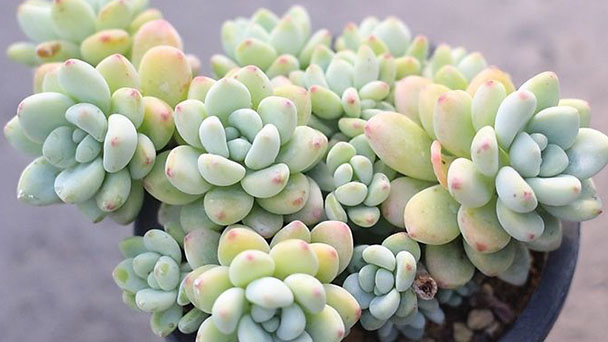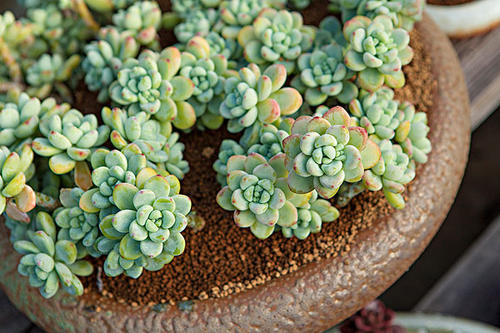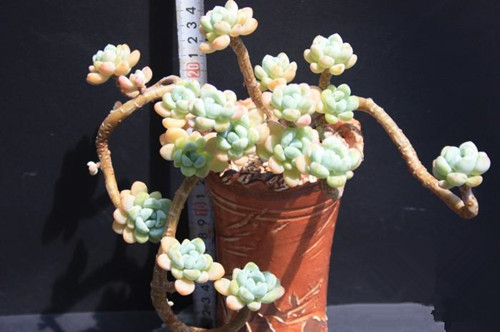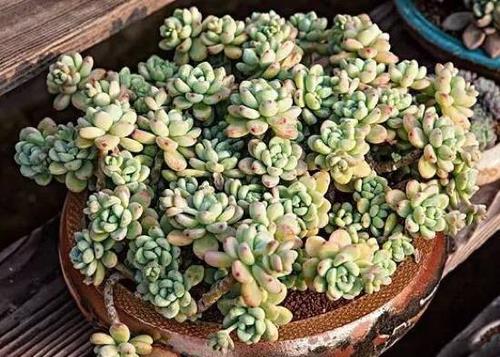How to Grow Sedum Clavatum in Summer
Written by Maggie
Sep 18 2021

Sedum Clavatum is used for summer conservation and shade protection, as strong light can cause sunburn on the leaves. Keep the temperature between 0℃ and 30℃. Spray water on the leaf surface and the air to cool down and moisturize the leaves. Put it in a ventilated place. Water it 3 times a month to avoid water accumulation. Trim the withered leaves of Sedum Clavatum in time to avoid insects and disease.
Sedum Clavatum picture

1. Light for Sedum Clavatum
Sedum Clavatum likes plenty of light, and as the temperature between day and night increases, its leaves become more colorful. Under suitable temperature, sedum clavatum can be placed in the open air for curing. Enough light can make small red spots appear on the leaves of Sedum clavatum to increase its ornamental value. The summer light is intense, which can cause the leaf sunburn, and we may carry on the appropriate shade protection.
2. Temperature for Sedum Clavatum
Sedum Clavatum does not require much in the environment, and its suitable growth temperature is between 0℃ and 30℃. Sedum Clavatum stops growing when temperatures rise above 30 ° C in summer. Sedum Clavatum can be preserved in a generally ventilated place to increase air circulation. It can be sprayed with water in the air to cool the body and moisturize it to promote the growth of Sedum Clavatum.

3. Water for Sedum Clavatum
Sedum Clavatum is drought-resistant and has thickened leaves that hold water well. As summer temperatures rise, they can be watered heavily to replenish water. Water thoroughly every time, three times a month, so that the soil in the moist state, in the rainy season there is more rain, and do a good job of soil drainage measures, or water will cause root rot.
4. Pruning for Sedum Clavatum
As summer temperatures rise, Sedum Clavatum begins to go into hibernation and the environment becomes drier, allowing it to cool and moisturize its leaves by spraying them with water. Pruning some of Sedum Clavatum's aging leaves reduces the consumption of excess nutrients, increases air mobility, and reduces the growth of bacterial pests and diseases.

Latest Updated
- Benefits of Bugleweed - 7 Science-backed Health Benefits
- Bugleweed Dangers & Side Effects - Is It Poisonous?
- How to Plant Evergreen Trees - What You Should Know
- When to Plant Evergreens - Grow Guide for Evergreen Trees
- 12 Wonderful Evergreen Shrubs for Your Garden
- 12 Popular Evergreen Plants with Pictures for Beginners
- When And How To Prune A Lilac Bush Like a Pro
- How to Grow & Care for Lilac Vine (Hardenbergia Violacea)
- Japanese Lilac Tree (Syringa Reticulata) Care & Propagation Guide
- Shumard Oak Pros and Cons - What to Know
Popular Articles
- Winter maintenance of Antirrhinum Majus
- How to Grow Terminalia Mantaly Tree
- How to Grow and Care for Crossostephium Chinense
- How to grow Antirrhinum Majus in spring
- Peristeria Elata (Dove Orchid) Profile: Info & Care Guide
- Underwatered Snake Plant (Sansevieria Trifasciata) - Signs And How To Fix
- How to Care for Brazilian Jasmine Plant (Mandevilla Sanderi)
- How to Grow & Care for Graptopetalum Purple Delight in Summer
- Rosa Chinensis (China Rose): Plant Growing & Care Tips
- How to Care for Baby Sun Rose (Aptenia Cordifolia)